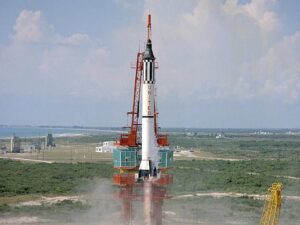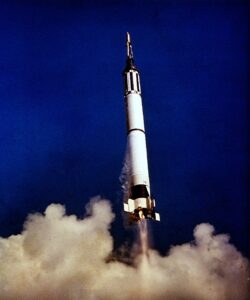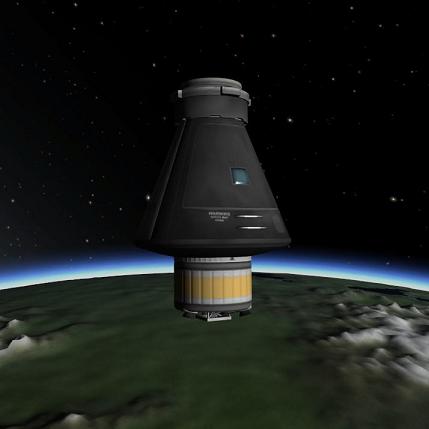Mercury-Redstone

The actual Mercury-Redstone Launch Vehicle was an 83-foot (25 m) tall, single-stage launch vehicle used for suborbital flights and was a descendant of the German V-2 developed for the U.S. Army during the early 1950s. The Atlas was modified for Project Mercury by removing the warhead and adding a special collar for supporting the spacecraft. Its rocket motor was produced by North American Aviation and had a liquid-fueled engine that burned alcohol and liquid oxygen, producing about 75,000 pounds of thrust. Both the Atlas-D and Redstone launch vehicles contained an automatic abort sensing system which allowed them to eject the Mercury capsule if something were to go wrong.

Mercury-Redstone 3, or Freedom 7, was the first United States human spaceflight, on May 5, 1961, piloted by astronaut Alan Shepard. It was the first crewed flight of Project Mercury. The project had the ultimate objective of putting an astronaut into orbit around the Earth and return him safely. Shepard's mission was a 15-minute suborbital flight with the primary objective of demonstrating his ability to withstand the high g-forces of launch and atmospheric re-entry.
Spacecraft reached an altitude of 101.2 nautical miles (116.5 statute miles, 187.5 km) and traveled a downrange distance of 263.1 nautical miles (302.8 statute miles, 487.3 km). It was the fourth Mercury flight launched with the Mercury-Redstone Launch Vehicle, from Cape Canaveral, Florida, close to the Atlantic Ocean.

During the flight, Shepard observed the Earth and tested the capsule's attitude control system, turning the capsule around to face its blunt heat shield forward for atmospheric re-entry. He also tested the retrorockets which would return later missions from orbit, though the capsule did not have enough energy to remain in orbit. After re-entry, the capsule landed by parachute on the North Atlantic Ocean off the Bahamas. Shepard and the capsule were picked up by helicopter and brought to U.S. Navy aircraft carrier USS Lake Champlain.